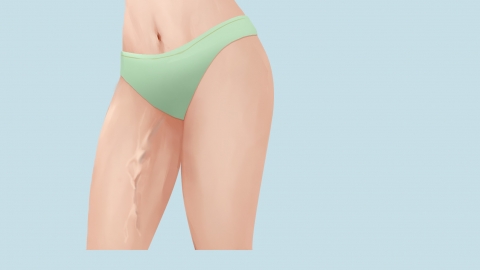How to treat varicose veins in the thigh
In general, treatment methods for varicose veins in the thigh mainly include conservative management, physical therapy, medication, traditional Chinese medicine (TCM), and surgical intervention. A detailed analysis is as follows:

1. Conservative Management
Patients should avoid prolonged standing or sitting and regularly move their legs to promote venous blood return. Wearing loose clothing in daily life is recommended to prevent tight pants from compressing leg veins. Additionally, maintaining a healthy weight reduces strain on the legs. Engaging in appropriate exercises such as brisk walking or swimming can strengthen leg muscles, assist venous return, and slow disease progression.
2. Physical Therapy
Physical therapy uses external forces to improve venous return and relieve symptoms. Common methods include compression with medical elastic stockings and intermittent pneumatic compression therapy. Medical compression stockings provide graduated pressure from the ankle up to the thigh, helping venous blood flow upward and reducing leg swelling and heaviness. Intermittent pneumatic compression therapy uses a device to rhythmically inflate and compress the legs, simulating muscle contractions to enhance venous circulation and improve local blood flow.
3. Medication
Pharmacological treatment is commonly used for varicose veins in the thigh. Patients may take medications under medical guidance, such as micronized purified flavonoid fraction tablets, diosmin tablets, calcium dobesilate capsules, citrus flavonoids tablets, or rivaroxaban tablets, to alleviate symptoms and improve venous function.
4. Traditional Chinese Medicine (TCM)
According to TCM, varicose veins in the thigh are associated with factors such as qi deficiency with blood stasis and downward infiltration of damp-heat. Treatment often involves herbal remedies that tonify qi, activate blood circulation, clear heat, and resolve dampness, such as Xuefu Zhuyu Pills or Simiao Pills. Acupuncture can stimulate specific points on the legs to regulate the flow of qi and blood, improve local circulation, and help relieve symptoms like leg heaviness, soreness, and discomfort caused by varicose veins.
5. Surgical Treatment
For patients with severe conditions or poor response to conservative treatments, surgery may be considered. Common procedures include high ligation and stripping of the great saphenous vein, endovenous laser ablation, radiofrequency ablation, and sclerotherapy. These interventions aim to remove or close diseased veins, thereby restoring normal venous return and achieving therapeutic goals.
In addition, during treatment, patients should follow medical advice strictly, undergo regular follow-up examinations, and monitor changes in their condition. If any abnormalities occur—such as worsening leg pain, skin color changes, or ulcer formation—prompt medical attention is necessary to adjust the treatment plan accordingly.




